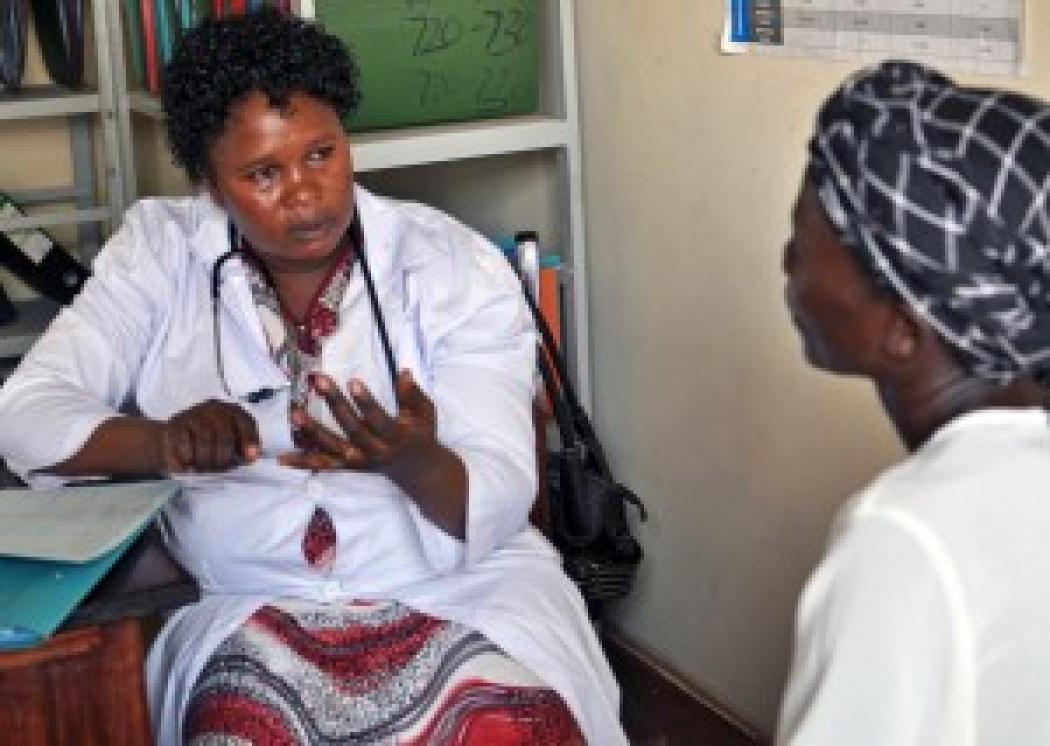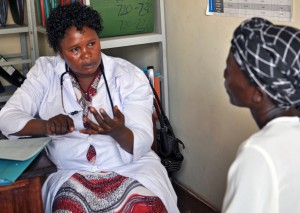Empowered Health Workers Improve Health Care, One Facility at a Time

By Sarah Dwyer, IntraHealth International
Uganda strengthens health service delivery by focusing on the people who provide quality care
“What inspires me is when I see patients critically ill and then recovering, laughing, smiling—I feel great,” says Agnes Masagwayi, a senior clinical health officer in Mbale District, Uganda. “I love my job with all my heart.”
But her health facility, she admits, was in “a bad state.” Running water was sporadic. Essential drugs ran out. Space for maternity care was so limited that many women delivered babies on the floor. Infection control was poor. And there weren’t nearly enough health workers to meet the demand.
In Mbale District only 337 of 708 health worker positions were staffed. Throughout the country, all districts faced similar shortages.
Two USAID-supported projects led by IntraHealth International—the Uganda Capacity Program and CapacityPlus—lent a hand. They partnered with the Ministry of Health to strengthen district-level health workforce leadership and management, use data to make evidence-based decisions, and advocate for increased funding for the health sector.
Nineteen districts participated in the six-month Human Resources for Health (HRH) Leadership and Management Program. The experience empowered Agnes, who realized that “really it is ourselves who need to plan, prioritize, and know what problems we have—and the available opportunities for addressing them.”
She and her colleagues learned how to plan using a bottom-up approach: “You team up, identify issues by department, [determine] the priorities,” Agnes recounts. “With the management committee we sit together and come up with a workplan.” After prioritizing their needs and coming up with solutions, they put plans into action.
“We acted as a team and lobbied with the district and partners,” Agnes says. Now, running water is always available thanks to new large tanks. Her facility prioritized the construction of a building to accommodate mothers, and now this new maternity ward provides space for women to deliver. A new drug management system helps prevent stockouts.
And there’s more. Infection control measures are in place, and health workers are upgrading their knowledge on their own initiative. “Now we have CMEs [continuing medical education] in this unit monthly,” says Agnes. “We set topics and discuss ways of managing cases.” Her facility places a new emphasis on recognizing staff for a job well done. “Some excelling midwives have been given certificates,” she notes. “They were very motivated, and we shall carry on with this.”
All in all, Agnes reflects, “We realized our patients are our customers. Client care has improved in this facility so much.” Out-patient services doubled in Mbale, and the district rose from 22 to 6 in the national rankings for health service delivery.
At the same time, the Ministry of Health used data from Uganda’s customized HR information system to identify vacancies and needed health workers, gained further information from a retention and costing study, and successfully advocated to Parliament for a $19.8 million recruitment fund. This enabled Uganda to hire more than 7,000 new workers to join Agnes.
Meet Agnes and learn more in this short video.

